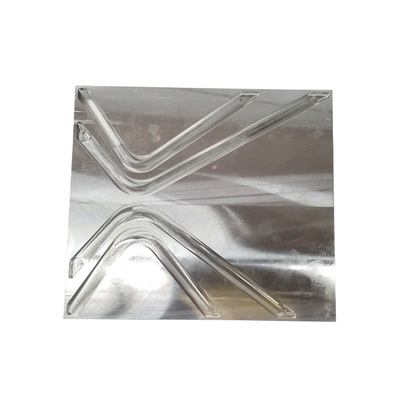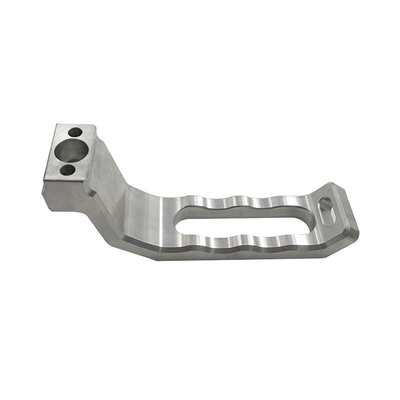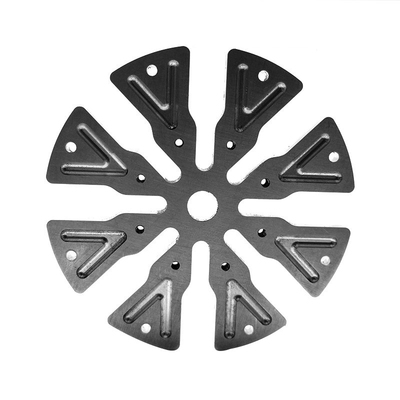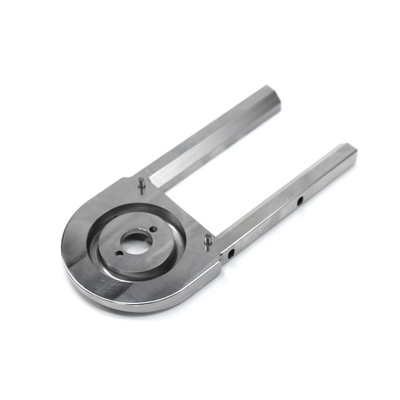The newly launched laser cladding technology can effectively improve the wear resistance of composite coatings!
In order to improve the performance of the cladding layer, this study uses the Taguchi design to study the effects of laser power, scanning speed, gas flow and SiC powder ratio on the microhardness and wear volume of the cladding layer.
The results show that the SiC powder ratio is the main factor affecting the microhardness and wear of the cladding layer. The contribution of the ratio of silicon carbide powder to the microhardness and wear volume is 92.08% and 79.39%, respectively. Through signal-to-noise ratio transformation and gray correlation analysis, multi-objective optimization is realized.
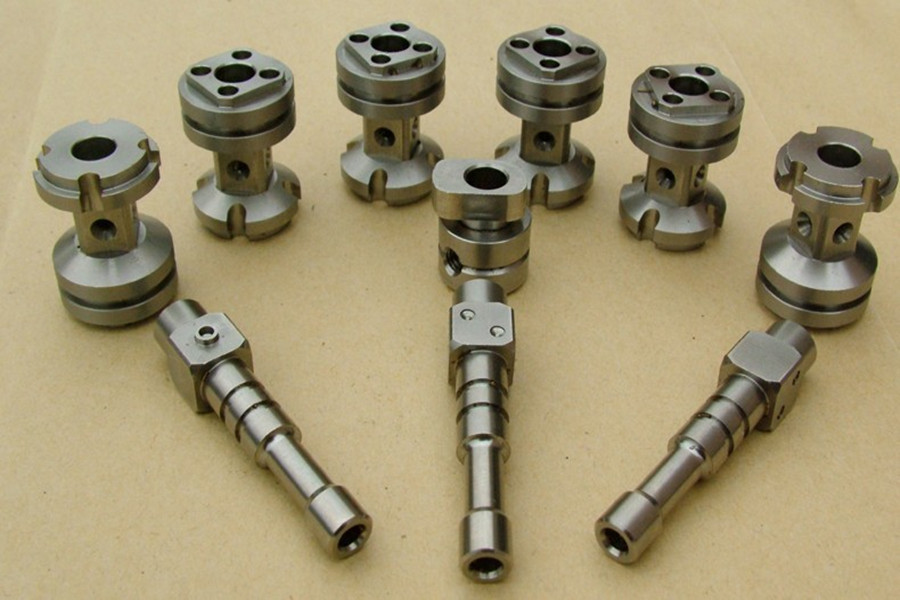
Taking the maximum microhardness and minimum wear as the goal, the gray correlation analysis method is used to obtain the best processing parameter set and predict the corresponding gray correlation level. The error rate of prediction and experimental verification is 5.3%. This study provides guidance for the application of the gray correlation analysis method for the performance of laser cladding coatings in practical industrial applications to optimize multiple goals at the same time, and provides a theoretical basis for the optimization of process parameters with the objectives of microhardness and wear resistance.
Laser cladding is a coating technology that uses high-energy laser beams to irradiate the surface of the substrate and the surface of the powder to quickly melt and cool the powder to form the required metal bond coating with the substrate. Because of its high energy density, high efficiency, excellent mechanical and physical properties, laser cladding is widely used in surface repair to form a multi-purpose low-dilution cohesion coating. Composite coating repair has developed rapidly in recent years. 316L stainless steel powder has been widely used in industry because of its low cost, corrosion resistance and self-dissolving property. However, 316L also has the limitations of low hardness and insufficient wear resistance. With the development of composite materials, these limitations can be improved by adding reinforcing particles. Silicon carbide particles have the advantages of high microhardness and good wear resistance. Therefore, SiC is a good reinforcing material for composite materials. They also studied the microhardness and wear resistance of the SiC-reinforced 316L stainless steel powder cladding layer during the laser cladding process.
Wen et al. found that laser cladding in 3.5 wt% NaCl solution can effectively improve the microhardness and corrosion resistance of 316L. Mei et al. studied the selective laser cladding of 316L and Inconel 718. They found that the contact area of the two materials has different microhardness and microstructure, pores and cracks. Murkute et al. studied the 316L coating on the AISI 1018 steel substrate and found that the hardness of the nanoindentation decreases with the increase of the scanning speed. Riquelme et al. deposited Al, Si, Ti and SiC composite coatings on ZE41 magnesium alloy. It is found that the alloying element ratio can improve the microhardness and mechanical properties of the alloy. Ramakrishnan and others have produced silicon carbide reinforced Haynes 282 (HY282) functionally graded super alloy with different silicon carbide compositions, structures and properties. The study found that with the increase of silicon carbide particles, the microhardness and wear resistance of superalloys have been significantly improved. Zhao et al. prepared 8.5 vol% SiC/AlSi10 Mg SiC ceramic reinforced aluminum matrix composites by selective laser melting. They pointed out that nano-hardness and elastic modulus are superior to traditional materials in the center and boundary.
At present, researchers' research on laser cladding of 316L stainless steel powder is mainly focused on improving the microhardness and wear resistance by adding reinforcing materials. The influence of laser cladding process parameters and strengthened composite materials on the microhardness and wear amount of the cladding layer is rarely found. The performance of the cladding layer determines the success or failure of the repair. The microhardness and wear resistance of the cladding layer are important indicators to measure the performance of the cladding layer. In this study, the Taguchi design was used for preliminary experiments. After analyzing the process parameters, the gray correlation analysis was used to optimize and predict the maximum microhardness and minimum wear of the 316L stainless steel and SiC composite cladding layer.
Research materials and methods
In this study, ASTM-5140 steel was selected as the matrix, with a size of 40mm×20mm×10mm, and the background is an industrial crankshaft repair application; its element composition is shown in Table 1. The powder used in the laser cladding process is a mixture of 316L stainless steel powder and SiC powder produced by Xiangcheng Yuteng Ceramic Products Co., Ltd. The particle size of the two powders is between 48 and 106°m, which meets the equipment specifications. Table 1 also shows the elemental composition of the above two coated powders.
The laser cladding system used in this study. The whole system consists of four subsystems, namely the control system, laser system, combustion chamber system, and powder gas delivery system. The whole system runs under the PLC control system of Japan's Mitsubishi Corporation. The laser system includes the YLS-3000 laser generator and sx14 -012 pulsed laser pulse control produced by IPG Optoelectronics. The generated laser energy is transmitted to the FDH0273 laser cladding nozzle and the 300 mm focal length room to complete the laser cladding process system, in the m-710 ic / 50 industrial robot and tflw-4000 World Development Report-01-3385 water cooling system equipment . During the cladding process, the CR-PGF-D-2 powder gas delivery system uses argon as the carrier and protective gas.
Before laser cladding, the surface of ASTM-5140 steel substrate was cleaned with acetone. When preparing the laser cladding powder mixture, 316L stainless steel powder and SiC powder were mixed in a MITR-YXQM-2L ball mill at 400 rpm for 30 minutes, and then dried in a vacuum dryer at 80°C for 30 minutes. This study uses an orthogonal combination of five factors and four levels, one of which is blank. The other four factors are the four processing parameters to be studied in this study, as shown in Table 2. A complete factorial experimental design will require 44 = 256 runs to include all combinations of the four factors and four-layer design. Taguchi design is an experimental design method. Compared with full factorial design, the number of runs is reduced, and the optimal combination is obtained through orthogonal matrix.
The laser cladding process is carried out according to the settings in Table 3, and one sample is obtained for each run. After completion, 16 samples were subjected to linear cutting, grinding, and aqua regia dipping for later measurement and testing. After the sample was prepared, its microhardness was measured with a 402TS microhardness tester (HDNS, Shanghai, China), and a force of 500g was applied for 30 seconds. The measurement position is under the cladding layer to ensure accuracy, because the incompletely melted material is on the top surface of the cladding layer, and the bottom layer of the cladding layer is diffused by Cr and C elements from the substrate. Use the wear index to explain the wear resistance of the material. The amount of abrasion was tested by UMT-2 High Load Scratch Tester (Brook, MA, USA), and the reciprocating scratches continued for 30 minutes. Then, the three-dimensional morphology of the scratched surface of each sample was obtained by white light interferometry. Then get the amount of wear for each sample.
variance analysis
Before performing the analysis of variance (ANOVA), a normality test is required, because if the data set does not obey the normal distribution, large errors may occur. Minitab 17 uses the Anderson-Darling test to test for normality, and when the p value is greater than 0.05, it is normally distributed. As can be seen from Figure 2 below, the S/N conversion p values of microhardness and wear volume in the Anderson-Darling test are both greater than 0.05. Therefore, the normal distribution of these two responses was verified, followed by analysis of variance.
Wear analysis
As the ratio of SiC powder to material increases, the S/N of wear increases. Since the S/N of the amount of wear can be converted, the smaller the amount of wear is expected, the better, so the S/N of the amount of wear is negatively correlated with the actual amount of wear. In Figure 3, the increase in the SiC powder ratio leads to the increase in the wear amount S/N, which actually represents the decrease in the actual wear amount of the composite layer. It is generally believed that the wear resistance of a material is related to the hardness of the material. According to the Archard wear equation, the wear volume is negatively related to the hardness. Due to the increase of the silicon carbide powder ratio, the microhardness of the coating is improved, thereby reducing the actual contact and friction area of the coating during the scratching process, and improving the deformation resistance of the coating. Therefore, the amount of wear is reduced.
in conclusion
In this paper, the Taguchi experimental design is used to study the effects of laser power, scanning speed, gas flow, SiC powder ratio and other factors on the microhardness and wear volume of the cladding layer. On the basis of the signal-to-noise ratio conversion, the grey relational analysis method is applied to achieve multi-objective simultaneous optimization. The predicted processing parameter set is verified through experiments. conclusion as below:
·Only the analysis of microhardness shows that it is mainly affected by the ratio of silicon carbide powder, and the influence of other process parameters is not statistically significant. The microhardness of the cladding layer increases with the increase of the silicon carbide powder ratio.
·From the analysis of the wear volume itself, it can be seen that the main factor affecting the wear volume is the silicon carbide powder ratio, and the influence of other process parameters is not statistically significant. The wear volume of the cladding layer decreases with the increase of the silicon carbide powder ratio.
·The contribution of SiC powder ratio to microhardness and wear volume is 92.08% and 79.39%, respectively. It shows that the microhardness and wear amount are mainly affected by the ratio of silicon carbide powder, and other process parameters are less affected.
·Using the grey relational analysis method, the goal of maximum microhardness and minimum wear is achieved. The processing parameters set to achieve this goal are: laser power 1800 W, scanning speed 6 mm/s, gas flow rate 110 L/h, SiC powder ratio 30%.
·Predict the degree of gray correlation, and perform experimental verification in the analysis of multi-objective gray correlation. The error rate between the predicted value and the actual value is 5.3%. The applicability of grey relational analysis in multi-objective optimization problems is verified.
Link to this article:
Reprint Statement: If there are no special instructions, all articles on this site are original. Please indicate the source for reprinting:https://www.cncmachiningptj.com
 PTJ® provides a full range of Custom Precision cnc machining china services.ISO 9001:2015 &AS-9100 certified.
PTJ® provides a full range of Custom Precision cnc machining china services.ISO 9001:2015 &AS-9100 certified.
Machining shop specializing in fabrication services for construction and transportation industries. Capabilities include plasma and oxy-fuel cutting, Tailored machining, MIG and Custom Aluminum Cnc Precision Milling Welding Jig Fixture, roll forming, assembly, Lathe machining stainless steel cnc machine shaft, shearing, and CNC Swiss Machining services. Materials handled include carbon and Passivation Stainless Steel Machining Cover Plate Parts.
Tell us a little about your project’s budget and expected delivery time. We will strategize with you to provide the most cost-effective services to help you reach your target,You are welcome to contact us directly ( [email protected] ) .

- 5 Axis Machining
- Cnc Milling
- Cnc Turning
- Machining Industries
- Machining Process
- Surface Treatment
- Metal Machining
- Plastic Machining
- Powder Metallurgy Mold
- Die Casting
- Parts Gallery
- Auto Metal Parts
- Machinery Parts
- LED Heatsink
- Building Parts
- Mobile Parts
- Medical Parts
- Electronic Parts
- Tailored Machining
- Bicycle Parts
- Aluminum Machining
- Titanium Machining
- Stainless Steel Machining
- Copper Machining
- Brass Machining
- Super Alloy Machining
- Peek Machining
- UHMW Machining
- Unilate Machining
- PA6 Machining
- PPS Machining
- Teflon Machining
- Inconel Machining
- Tool Steel Machining
- More Material

